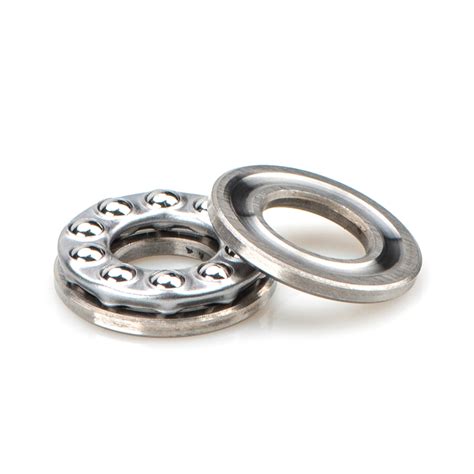Axial Bearings: Essential Components for Precise Motion Control
Introduction
Axial bearings play a crucial role in a wide range of mechanical systems, enabling the smooth and efficient movement of components along an axial direction. Their ability to handle thrust loads and minimize friction makes them indispensable for applications such as pumps, machine tools, and wind turbines. This comprehensive guide provides an in-depth overview of axial bearings, covering their design, types, applications, and maintenance.
Understanding Axial Bearings
Definitions and Functions
Axial bearings are specialized bearings designed specifically to bear thrust loads, which are forces acting parallel to the shaft axis. Unlike radial bearings, which handle loads perpendicular to the axis, axial bearings prevent axial displacement and maintain component alignment.
Design and Construction
Axial bearings typically consist of a thrust washer, a collar, and a housing. The thrust washer, which bears the axial load, is made of a hard and wear-resistant material such as hardened steel or ceramic. The collar and housing provide support and guidance for the thrust washer. Axial bearings can be single-acting, designed to handle loads in one direction, or double-acting, capable of handling loads in both directions.

Types of Axial Bearings
Ball Thrust Bearings
Ball thrust bearings utilize rows of hardened steel balls that roll between opposing contact surfaces. They offer low friction, high load capacity, and the ability to accommodate both axial and radial loads.
Roller Thrust Bearings
Roller thrust bearings employ cylindrical or tapered rollers instead of balls. They provide higher load capacity and durability compared to ball thrust bearings, making them suitable for heavy-duty applications.
Hydrostatic and Hydrodynamic Bearings
These types of axial bearings utilize a thin film of pressurized fluid to separate the bearing surfaces. They offer extremely low friction and high precision, but require an external fluid supply system.

Thrust Pads
Thrust pads, also known as pivot pads, are used in high-performance applications such as turbine engines and thrusters. They consist of wedge-shaped pads that generate hydrodynamic lift to support the load.
Applications of Axial Bearings
Axial bearings are widely used in various industries, including:

- Pumps and compressors
- Machine tools
- Wind turbines and aerospace propulsion systems
- Robotics
- Heavy machinery
Choosing the Right Axial Bearing
Selecting the appropriate axial bearing for a specific application requires consideration of factors such as:
-
Load capacity: The bearing must be capable of handling the expected axial loads.
-
Speed: The bearing must operate within its speed range.
-
Environment: Bearings may need to withstand harsh operating conditions such as extreme temperatures, corrosion, or contaminants.
-
Accuracy and precision: The bearing should provide the required level of axial displacement control and alignment accuracy.
Maintenance and Troubleshooting
Proper maintenance is essential to extend the lifespan of axial bearings. Regular inspections and lubrication are crucial. Common troubleshooting techniques include:
- Monitoring for excessive noise or vibration
- Checking for overheating or wear
- Inspecting for proper alignment and preload
Tips and Tricks for Optimal Performance
-
Use a high-quality lubricant: Lubrication reduces friction and wear, extending bearing life.
-
Maintain proper alignment: Misalignment can lead to premature bearing failure.
-
Avoid overloading: Operating the bearing beyond its load capacity can cause damage.
-
Monitor operating conditions: Regularly check temperature, vibration, and other operating parameters to identify potential issues early.
-
Consider using sensors: Sensors can provide real-time monitoring of bearing performance and enable predictive maintenance.
Step-by-Step Guide to Installing an Axial Bearing
- Clean the bearing and mating surfaces thoroughly.
- Apply a thin layer of lubricant to the bearing surfaces.
- Insert the bearing into the housing carefully.
- Secure the bearing using a retaining ring or other suitable method.
- Align the bearing accurately using shims or other alignment tools.
- Tighten the retaining bolts to the specified torque.
- Check the bearing for proper alignment and preload.
Pros and Cons of Axial Bearings
Pros:
- High load capacity in the axial direction
- Low friction and smooth motion
- Ability to accommodate both axial and radial loads (ball thrust bearings)
- High precision and alignment accuracy
Cons:
- Limited radial load capacity
- Can be sensitive to misalignment
- May require specialized lubrication (hydrostatic and hydrodynamic bearings)
Call to Action
Axial bearings are essential components for precise motion control in a variety of applications. Proper selection, installation, and maintenance are crucial for maximizing their performance and lifespan. By understanding the different types of axial bearings, their applications, and following best practices for maintenance, engineers can ensure the reliable operation of their systems for years to come.


